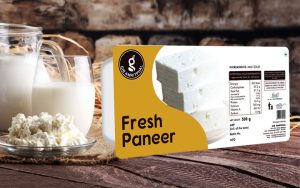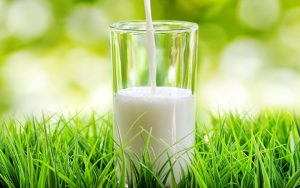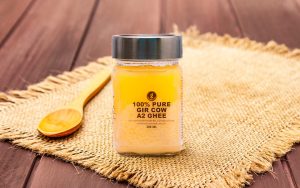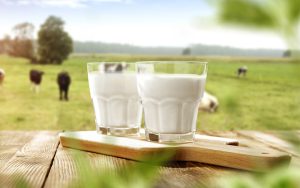Desi ghee has been used in Indian kitchens and Ayurveda for a long time. It is a golden substance that is believed to have healing and good health benefits.
However, with so many brands available today, it can be hard to find real ghee. Many products that say “pure” may actually have added oils, flavorings, or other unwanted substances that lower their quality.
Knowing how to check pure ghee at home helps you ensure what you consume is natural and healthy, especially when compared to A2 ghee vs normal ghee. Let’s explore some easy and effective home tests that reveal whether your ghee is truly pure.

Why You Should Test Ghee Purity at Home
Buy genuine ghee for your family. Ensure you check the purity, as it ensures good health. A few major benefits of pure ghee include improved digestion, immunity, and heart health.
Testing the purity helps you avoid harmful additives and enjoy the authentic flavor of real ghee.
Moreover, if you prefer traditional A2 Gir Cow Ghee like that from Giramritphal, purity testing confirms you’re investing in genuine, nutrient-rich ghee made the Ayurvedic way.
10 Easy Home Tests to Check Pure Ghee
Here are ten trusted methods to identify the difference between pure ghee and adulterated ghee, which are practical, natural, and easy to implement in your kitchen.
1. The Fragrance Test
Pure ghee has a nutty, caramelized aroma that feels genuine. To test it, warm a small amount, it emits a buttery scent similar to real butter.
In contrast, fake ghee has an artificial, chemical, or plastic-like smell. Simply testing pure ghee at home helps identify its authenticity through its scent.
2. The Freezing Test
Put a teaspoon of ghee in the fridge for an hour. Real A2 ghee will harden evenly and become a bit gritty, showing it’s pure.
If it splits into layers or stays partly liquid, it might have oils or harmful substances mixed in.
This is a simple way to tell the difference between A2 ghee and regular ghee, and to know if it’s genuine without needing a lab test.
3. The Heat Test
Heat a teaspoon of ghee in a pan. Real ghee melts quickly and turns golden brown, giving off a pleasant smell.
Fake or poor-quality ghee burns inconsistently, produces a lot of smoke, and turns dark brown or black. This easy test is a great way to check if ghee is pure at home and make sure it’s of good quality.
4. The Water Test
Put a spoonful of ghee into a glass of water. If the ghee settles at the bottom and does not mix with the water, then it is pure and not mixed with anything else.
Fake or oil-mixed ghee tends to float or mix with the water. This easy home test lets you spot real ghee versus artificial blends quickly, a smart tip in checking purity without equipment.
5. The Palm Rub Test
Take a little bit of ghee in your hands and rub it between your palms. Pure desi ghee melts quickly because of body heat and gives off a nice, buttery smell. If it feels sticky, waxy, or doesn’t melt easily, it probably isn’t pure.
This age-old method in how to check pure ghee at home is simple yet surprisingly effective for spotting real ghee.
6. The Flame Test
To check whether the ghee is pure or not, you can dip a cotton wick into it and light it. Pure ghee should burn steadily without crackling, indicating it is free from impurities.
If you hear popping or sputtering, the ghee likely contains impurities. This traditional method helps distinguish pure ghee from blended varieties.
7. The Iodine Test
Put a few drops of iodine into melted ghee. If the ghee turns blue, it means there is starch or harmful substances mixed in it. If the ghee stays the same color, then it is pure and genuine.
Though simple, this test is a clear scientific way of how to check pure ghee at home and separate real ghee from fake ones in just seconds.
8. The Taste Test
Pure ghee has a naturally nutty, rich flavor that melts smoothly on your tongue without leaving a greasy or artificial aftertaste. Fake or refined ghee often tastes oily or bitter.
When you consume A2 Gir Cow Ghee, it feels light, fresh, and wholesome, the perfect indicator of real ghee quality and purity.
9. The Texture Test
Real A2 ghee becomes hard and has a nice, grainy feel when it’s at room temperature. If your ghee feels too smooth, creamy, or waxy, it might be made with refined oils or added chemicals.
The grainy texture is a key sign that it’s real Bilona A2 ghee, which helps you tell the difference between A2 ghee and regular ghee easily and naturally.
10. The Color Test
Pure A2 Gir Cow Ghee has a golden-yellow color because it comes from the natural beta-carotene in cow’s milk.
If the ghee is fake or mixed with other things, it might look white or have a strange color. You can easily tell if it’s real by looking at its color.
Real ghee has a natural yellow shade, which helps you spot the difference and know it’s pure.
Why A2 Ghee Wins: A2 Ghee vs Normal Ghee

When comparing A2 ghee vs normal ghee, the difference lies in the milk source and process. A2 ghee is made from indigenous cows like Gir or Sahiwal, rich in A2 beta-casein protein.
It’s easily digestible, supports joint health, improves immunity, and enhances skin glow.
Normal ghee, often made from mixed or foreign breeds, lacks this quality. That’s why choosing Giramrit Phal A2 Gir Cow Ghee ensures purity, taste, and Ayurveda-approved nutrition, far superior to commercial alternatives.
Conclusion
Understanding how to check pure ghee at home empowers you to choose only the best for your health.
Authentic A2 Gir Cow Ghee from Giramrit Phal keeps traditional values, offers rich nutrients, and maintains natural purity that can’t be found in modern processed ghees.
Choose real ghee made from pure cow milk, free from chemicals and preservatives, as it’s a timeless Ayurvedic treasure for your body and mind.
Choose Authentic Ghee for a Healthier Life
Ready to experience the real taste and benefits of purity?
Visit GiramritPhal.com and bring home A2 Gir Cow Ghee, 100% natural, chemical-free, and handcrafted using the ancient Bilona method.
Because when it comes to your health, only real ghee matters.
FAQ’s
1. How do you know if ghee is pure?
You can identify pure ghee by its aroma, texture, and behavior when heated. Real ghee smells nutty and caramel-like, melts quickly, and turns golden when warm. Adulterated ghee often smells like oil and turns dark brown when heated. These simple tricks help you understand how to check pure ghee at home without any lab test.
2. Does pure ghee float on water?
No, pure ghee does not float on water. When you add a spoon of real ghee into a glass of water, it settles at the bottom. If it mixes or floats, it likely contains refined oils. This water test is one of the easiest methods for checking A2 ghee vs normal ghee purity.
3. How to check ghee purity at home with water?
Take a glass of water and add a spoonful of ghee. Pure A2 ghee will sink and remain separate, while adulterated or fake ghee floats or dissolves. This traditional how to check pure ghee at home test helps you detect real ghee instantly.
4. What is the color of pure ghee?
Pure A2 Gir Cow Ghee has a natural golden-yellow color because of beta-carotene in cow’s milk. Regular or adulterated ghee looks pale white or dull yellow. The color difference is a natural sign of A2 ghee vs normal ghee quality and purity.
5. What does pure ghee smell like?
Real ghee has a warm, nutty, and slightly sweet aroma, similar to roasted butter. If it smells chemical-like or artificial, it’s not pure. Always test the fragrance, it’s one of the best ways in how to check pure ghee at home.
6. Can I store ghee without refrigeration?
Yes! Authentic A2 Gir Cow Ghee from Giramrit Phal can be stored at room temperature for months without spoiling. Pure ghee doesn’t need refrigeration because of its natural fat stability, one more reason to choose real ghee over refined oils.
7. What happens when you heat pure ghee?
When you heat pure ghee, it melts easily and turns transparent golden brown while releasing a soothing aroma. Fake ghee smokes heavily and turns dark. The heat test is one of the most reliable how to check pure ghee at home methods.
8. Why is A2 ghee considered better than normal ghee?
A2 ghee vs normal ghee differs mainly in milk source and purity. A2 ghee, made from desi cow milk, contains A2 beta-casein protein and healthy fats that nourish the body and skin. Normal ghee or mixed varieties lack these natural nutrients and are often adulterated.
9. Can pure ghee solidify in winter?
Yes, pure ghee naturally solidifies in cooler temperatures and becomes grainy in texture. If your ghee stays liquid or smooth even in cold weather, it might contain refined oils. This seasonal change is a great indicator of real ghee purity.
10. Is Giramrit Phal A2 Ghee 100% pure?
Absolutely! Giramrit Phal A2 Gir Cow Ghee is made using the traditional Bilona method, ensuring zero adulteration and maximum nutrition. Our ghee passes all home purity tests, fragrance, texture, and color, proving it’s the real ghee you can trust.
Reference:







